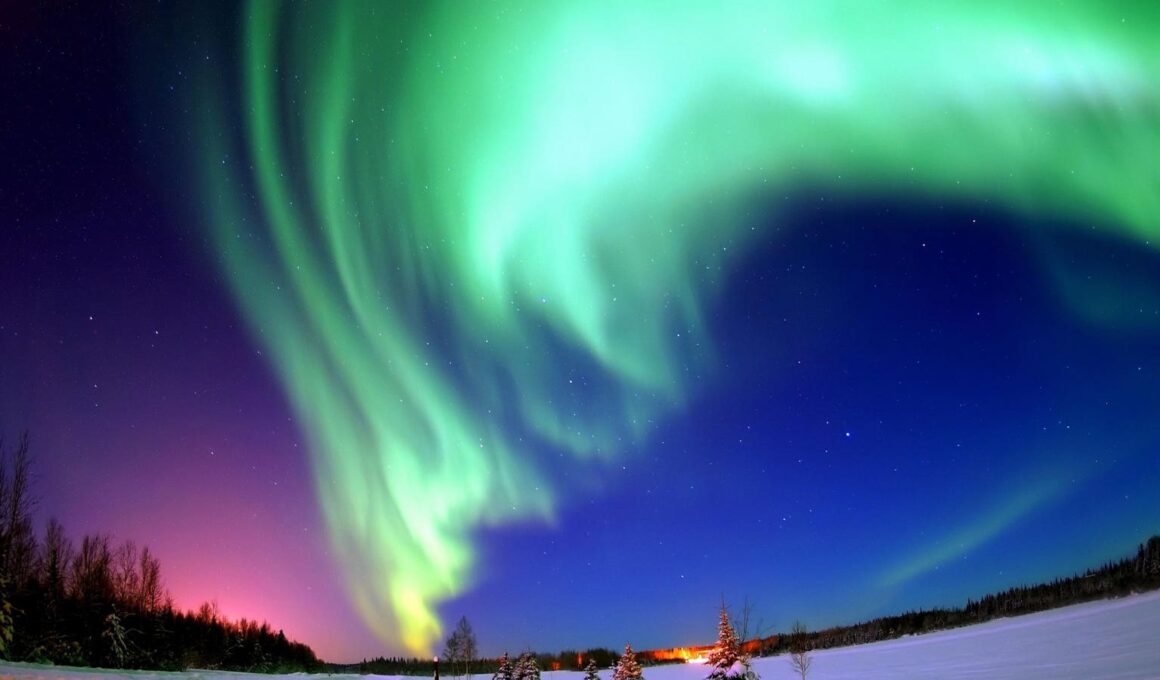Updated Northern Lights Forecast: Where To See Aurora Borealis Tonight Amid ‘Cannibal’ Eruption
Topline
There’s a strong possibility the Northern Lights will be visible in parts of the United States again Tuesday night after scientists predicted a solar phenomenon called a “Cannibal CME” would cause geomagnetic storms to display the aurora into Thursday night.
Photograph of the Northern Lights, also known as, an Aurora.
Universal Images Group via Getty Images
Key Facts
Tuesday’s aurora has a Kp index of five, which means the lights will move further from the poles and appear brighter to observers, causing them to be “pleasing to look at” under the correct viewing conditions, according to the National Oceanic and Atmospheric Association.
NOAA issued geomagnetic storm watches that originally ended Wednesday night, but have now been extended to Thursday; Tuesday has a strong G3 storm watch, while Wednesday and Thursday have moderate G2 watches.
Solar flares over the weekend caused multiple coronal mass ejections—eruptions of solar material—to form, and they’re expected to arrive at Earth between Tuesday and Wednesday, according to NOAA.
This week’s lights are the result of a space phenomenon called a “Cannibal CME,” which happens when an initial coronal mass ejection (or CME) is overtaken by a second, much faster CME, creating a massive cloud of plasma that can cause strong displays of the Northern Lights.
These may be the brightest auroras since May’s Northern Lights, which were also caused by a Cannibal CME, and by comparison had a geomagnetic storm rating of G5—the most extreme classification.
Where Will The Northern Lights Be Visible Tonight?
Though it’s difficult to predict where exactly the lights will be visible, NOAA offers a forecast with a potential viewline (see below). U.S. states within the aurora’s view line include Alaska, Washington, Oregon, Idaho, Montana, Wyoming, North Dakota, South Dakota, Minnesota, Iowa, Wisconsin, Michigan, Indiana, Ohio, New York, Vermont, New Hampshire and Maine.
What’s The Best Way To See The Northern Lights?
The lights are usually most active between 10 p.m. and 2 a.m. EDT. For the best views of the Northern Lights, the agency advises traveling as close to the poles as possible, avoiding city lights and other light pollution, monitoring weather forecasts for prime viewing conditions and finding a position on a vantage point like a hilltop. Smoky skies due to wildfires in Canada and California may affect the views of some aurora chasers in the northern U.S.
What’s The Best Way To Photograph The Northern Lights?
Smartphone cameras are sensitive enough to pick up the aurora, even when it’s invisible to the naked eye. Visit Iceland, a tourist website for Iceland, where the lights are often visible, advises turning on night mode to best increase smartphone camera exposure.
Key Background
The Northern Lights that have been appearing in the U.S. and other parts of the world since May are the result of very active sunspots NOAA has dubbed NOAA Active Region 13664. These sunspots led to an incredibly strong G5 geomagnetic storm in May, which is the highest label storms can be given. Researchers aren’t sure why May’s storm was so severe, but they think it may be due to the quick succession of multiple coronal mass ejections leading to what they call Cannibal CMEs. As a result, May’s lights were the strongest since the Halloween solar storms of 2003. An event called Solar Cycle 25—the cycle the sun goes through around every 11 years—has been the cause of geomagnetic storms that have resulted in recent sightings of the Northern Lights, and NASA predicts it will continue on into 2026. Cycle 25 began in Dec. 2019, and it’s estimated it will reach its maximum—when activity is expected to peak— between late 2024 and early 2026. It’s projected to peak with 115 sunspots, which are where geomagnetic storms originate. Although the maximum hasn’t happened yet, the sun’s activity has been busier than scientists anticipated, so it’s possible there will be even more geomagnetic storms leading up to 2025, though it’s difficult to predict exactly when these storms will occur.









